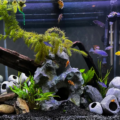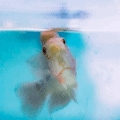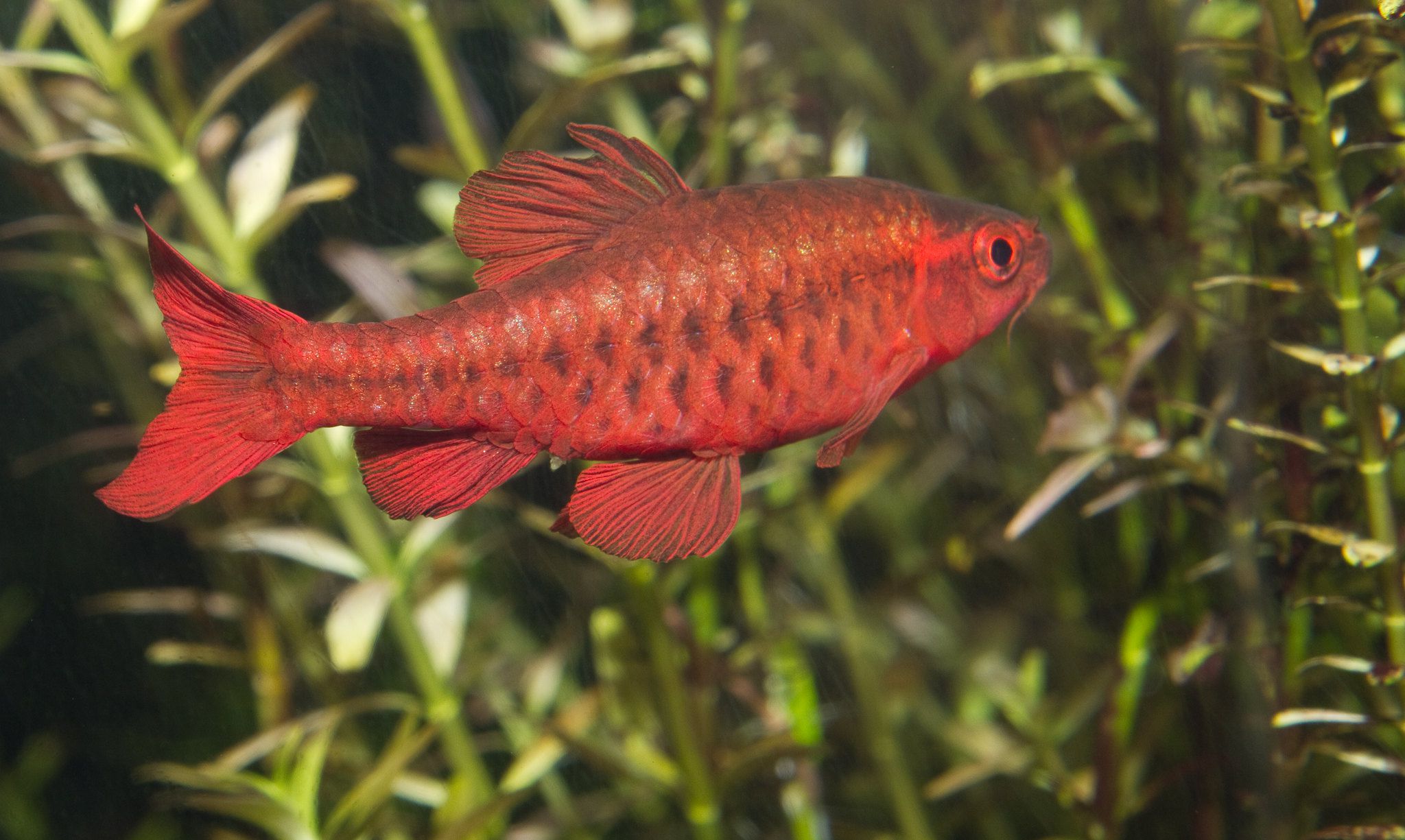Keeping fish as pets can be a rewarding and exciting hobby. Swordtails, known for their vibrant colors and distinctive sword-like tails, are a popular choice among aquarium enthusiasts. If you’re considering adding swordtails to your tank, you may be wondering how many of these lively fish can be kept together. In this article, we will provide you with valuable insights into the ideal group size and factors to consider when determining the number of swordtails to keep together.
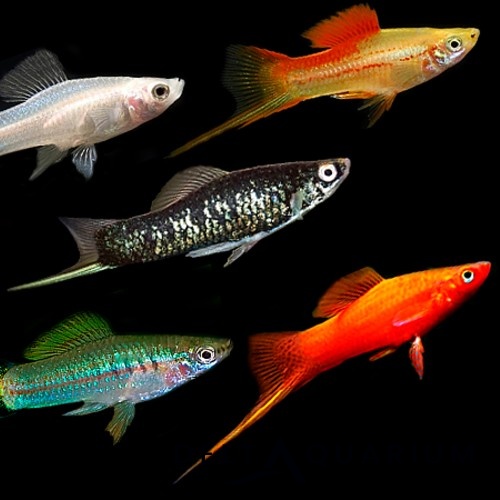
Swordtail Fish Origins and Habitat
Swordtail fish are a popular choice for community aquariums due to their vibrant colors and hardy nature. Native to Central America, they thrive in warm, freshwater environments.
Male swordtails are instantly recognizable by their distinctive sword-like tail extension. These tropical fish are easy to breed, making them ideal for both beginner and experienced aquarists.
Swordtails are omnivores and will readily accept flake foods, pellets, and live foods like brine shrimp. Due to their hardy species status, they tolerate a range of water conditions.
Selective breeding has given us a wide range of colors and patterns, though it’s best to keep only one male with several females to minimize aggression between other swordtails and ensure a peaceful environment for other species in your aquarium.
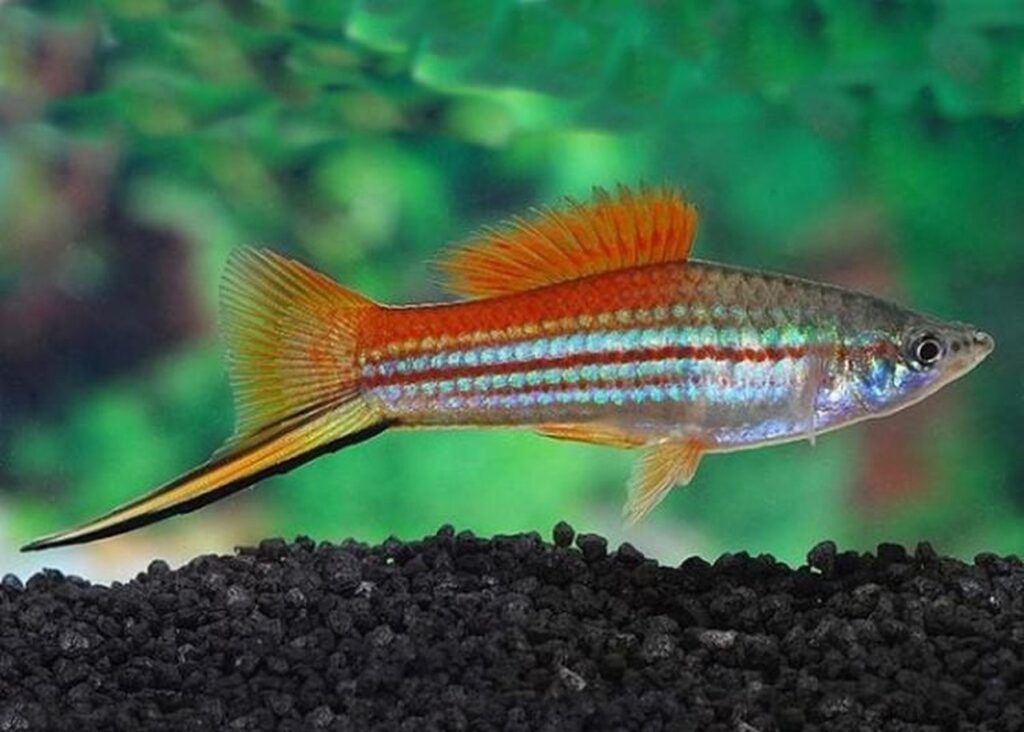
Overview of Swordtails as a Fish Breed
Swordtails, scientifically known as Xiphophorus hellerii, are native to Central America and are widely distributed in the aquarium trade.
They are known for their peaceful nature, making them suitable for community tanks.
With their vibrant colors and graceful appearance, swordtails can add a touch of elegance to any aquarium.
Swordtails are a social fish species that thrive in the company of their own kind. In their natural habitat, they inhabit slow-moving freshwater rivers and streams, often found in small shoals.
Therefore, when kept in captivity, they enjoy being part of a group and can exhibit more natural behaviors.
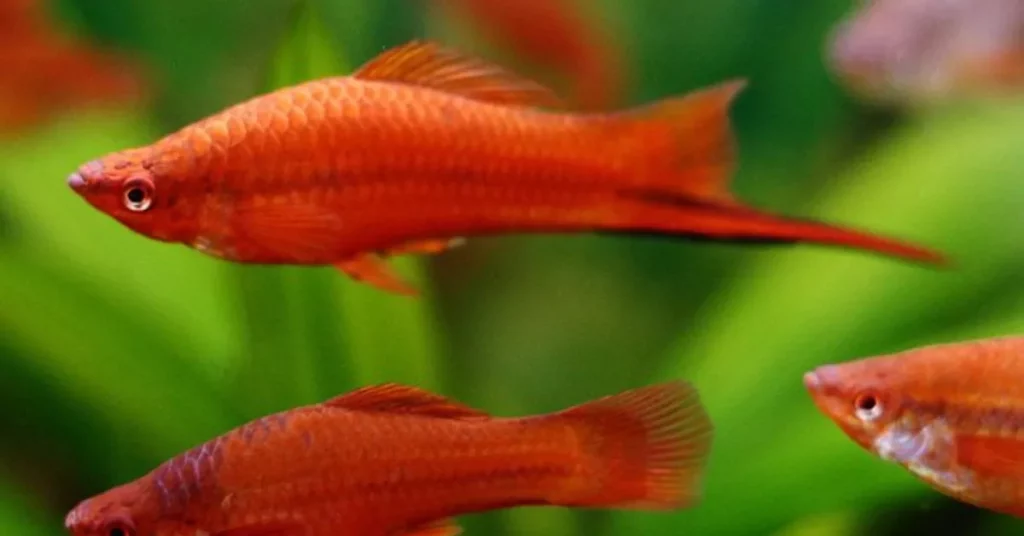
Factors to Consider when Determining the Number of Swordtails to Keep Together
When determining the number of swordtails to keep together, several factors need to be taken into account.
The size of your tank, the availability of hiding places, and the balance between males and females are crucial considerations.
Swordtails require ample space to swim freely and establish territories, especially the males, who are known for their territorial behavior.
Ideal Group Size for Swordtails
The ideal group size for swordtails is a topic of debate among fishkeepers. Some recommend starting with a group of at least four or five individuals, while others suggest a larger group of seven to ten. A larger group can help reduce aggression among the males and provide a more balanced social dynamic.
Maintaining the Correct Male-to-Female Ratio in a Swordtail Tank
A crucial aspect to consider when keeping swordtails is maintaining the correct male-to-female ratio. Swordtails are livebearers, meaning they give birth to live fry instead of laying eggs.
To prevent the females from being overwhelmed by constant mating attempts from the males, it is important to have at least two or three females for each male in the tank.
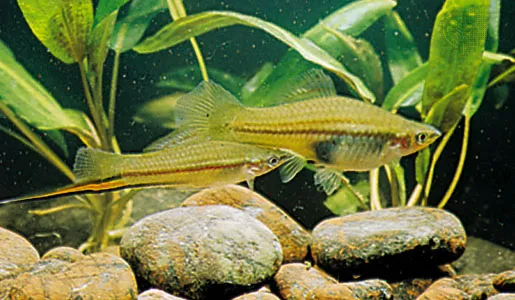
Potential Issues with Overcrowding Swordtails
While swordtails enjoy social interaction, overcrowding the tank can lead to numerous problems. Overcrowding can cause stress, aggression, and territorial disputes among the fish. It can also lead to poor water quality due to excessive waste production. To ensure the health and well-being of your swordtails, it is crucial to maintain an appropriate stocking density.
Creating a Suitable Habitat for Swordtails in a Community Tank
When setting up a tank for swordtails, it is important to create a suitable habitat that mimics their natural environment. Provide plenty of plants, rocks, and driftwood to offer hiding places and establish territories. Additionally, ensure that the water parameters, such as temperature and pH levels, are suitable for swordtails and any other tankmates.
Tips for Introducing New Swordtails to an Existing Group
If you plan to introduce new swordtails into an existing group, it is essential to do so with caution. Quarantine any new fish before adding them to the tank to prevent the spread of diseases. Acclimatize them slowly to the water conditions and closely monitor their behavior to ensure a smooth integration into the group.

Setting Up a Swordtail Breeding Group
Swordtails are hardy fish, and most swordtails thrive in small groups. For breeding swordtails, it’s recommended to keep a ratio of at least two females for every male swordtail fish to minimize stress. This also helps maintain the lineage if you are working with selectively bred varieties. Remember, even with peaceful species, observe their behavior to ensure everyone is coexisting happily.
Recommended Tank Size for Keeping Swordtails Together
Due to their active nature and social tendencies, swordtails require a spacious tank. A minimum tank size of 50 gallons is recommended for keeping swordtails together. Providing ample swimming space and territory for each fish is crucial in maintaining a harmonious and thriving community.

Conclusion
Keeping swordtails together in a tank can be a rewarding experience, allowing you to observe their fascinating natural behaviors and vibrant colors.
By considering factors such as tank size, male-to-female ratio, and maintaining a suitable habitat, you can create a harmonious environment for your swordtails to flourish.
Remember, providing the right conditions and ensuring the well-being of your fish are paramount. Enjoy the beauty of these stunning fish as they gracefully swim and brighten your aquarium.


